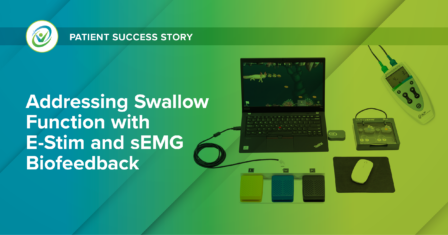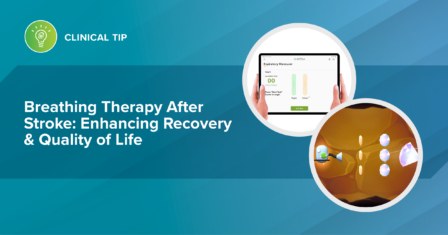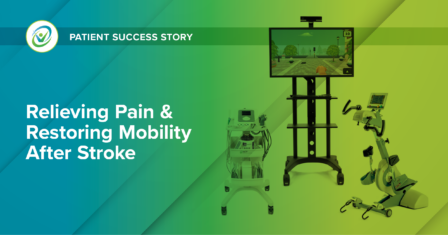Rehab Documentation Using OmniVR®

OmniVR® III Virtual Rehabilitation System is designed specifically around functional rehabilitation for aging adults and those with physical limitations. This easy-to-use system incorporates an advanced 3D camera and specialized computer to capture movements and allows them to interact in a virtual world. A patient’s therapy can be precisely customized by the clinician tailoring the exercise to the patient’s needs. Virtual reality is known to motivate patients to participate in therapy and exercise harder and longer, allowing them to meet their goals faster and improve quality of life. Additionally, OmniVR provides objective data to improve treatment planning, modification, goal setting, and documentation.
In clinical practice, documentation helps therapists communicate the treatment of a patient to other therapists and healthcare professionals. It also helps establish what treatment was performed to support skilled services. Strong documentation conveys information in the six key areas defined below.
- CPT Code: Identify the services provided and billed.
- Underlying Impairments of Client Factors: Incorporate impairments or client factors (e.g., limitations in strength, transfers, gait) and their impact on functional performance (e.g., functional mobility, self-care)
- Therapy Tests & Measures: Include appropriate patient-specific objective tests/measures and vital signs.
- Intervention/Technical Preparation: Identify activity performed and respective parameters to indicate change or progress in plan of care (e.g., repetitions/sets performed, resistance used). Include any special set-up or positioning needed.
- Skilled Therapeutic Interaction: Document how activity and vital sign responses (before, during, and after a mode of treatment) were used to guide/adjust the treatment (e.g., SpO2 decreased to 89% and patient was given a 4-minute rest break, activity resumed upon SpO2 96%). Include amount of verbal and tactile cues used.
- Client Performance: Periodically repeat the same tests/measures and vital signs and compare to previous/baseline values in order to assess progress, or lack thereof. Also document patient response to treatment and participation in therapy and facility activities.
OmniVR® III Virtual Rehabilitation

30 Different OmniVR III Exercises
covering body areas, functional mobility, ADLs,
and cognition, including:

Upper Extremity
(Picking Fruit)

Standing Balance
(Puzzle)

Lower Extremity
(Picnic)

Gait
(Everyday Environments)

Seated Balance
(The Fox)

Wheelchair Mobility
(Stop the Wolf)

Sit-to-Stand
(Bingo)

Cognition
(Memory Training)
Sit-to-Stand Transfers Documentation Long-term Goal:
“Patient will improve ability to perform sit-to-stand transfers with reduced fall risk, as evidenced by performance of 10 independent sit-to-stand transfer reps with a seat height of 17 inches on the 30-Second Chair Stand Test in 4 wks.”
| CPT Code | “Session included in sit-to-stand transfer training therapeutic activity…“ |
| Underlying Impairments | “…to address inability to independently get out of bed or stand from a chair.” |
| Tests & Measures | “At evaluation, 30-Second Chair Stand Test: 0 times; required minimal assistance to transfer from sit-to-stand.” |
| Intervention/Technical Preparation | “Sit-to-stand transfer training using virtual reality exercise/activity. Exercise parameters set to partial sit-to-stand excursion requirements and a chair height of 20 inches.” |
| Skilled Therapeutic Interaction | “Therapist increased the chair height from standard 17 inches to 20 inches and modified virtual reality activity parameters based on low repetition performance during previous session. Parameter modification allowed partial sit-to-stand excursion to be counted as successful completion, in order to facilitate more repetitions.” |
| Client Performance | “Today’s session indicated an improvement in sit-to-stand transfers. Patient now independent with sit-to-stand transfer compared to requiring minimal assistance and 30-Second Chair Stand Test: 4 times compared to 0 times 2 wks ago. 16 out of 20 reps with virtual reality activity performed with full excursion today compared to 3 out of 10 1 wk ago. Due to patient’s improvements therapist will increase sit-to-stand excursion to full on next visit.” |
Author:
Andreé Akst, PT, MPT, CEEAA, NASM-CES, Clinical Services Content Specialist
Latest Updates
Subscribe to stay up-to-date on our latest posts.



